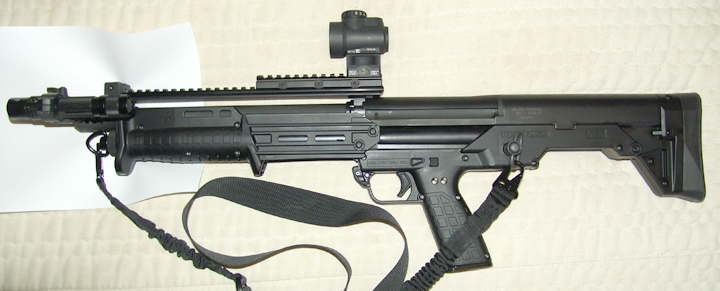A key with using a electronic sight with a defense gun is reliability. If you're going to trust your life to one, it better be a good one that won't fail when you need it.
Dittos. That's one really nice thing about iron sights. Choose correctly and they can be almost indestructable.
The potential problem with any shotgun is the potentially punishing recoil. Couple that with folks unwilling to spend the $ required for a really good sight that will stand up to that and that could lead to disaster. For some reason people think a sight should cost significantly less than the price of the gun and that may not be the best way to think.
Story time... I once had a buddy long since passed on to his reward. He would buy really nice long guns and then put the cheapest sights on them that he could find. They would have such features as multi color reticles and reticles of different shapes. You know, really useful stuff, not the hook in the bait for a fish (sarcasm). He brought over such a military rifle so equipped one day to shoot on my range. It was a bright sunny day. He was able over a period of time to decide where the dim reticle was for the shot. I was never able to find it so that I could shoot with any confidence in the shot (neither could he). He had a really nice and expensive rifle that he turned into absolute crap because he would never buy an optical sight worthy of any of his guns. The only time he ever got good sights was when it came with mil' spec' iron sights.
Now imagine this happening when the shotgun is needed to keep one alive during a HD social engagement. There are no "do overs" or "Can you wait a, minute while I___________ (fill in the blank) ? ". If one is playing a game, well, OK that'll work as long as there is no expectation of using it. But if there is the expectation of need then one had better have gear that one expects to work under the worst conditions and not the best of conditions. Being the second place finisher with weapons that deal in deadly force is not what you want to be. Just what is your own life worth?
I have one sight that I consider a POS. It's probably pretty decent since it was intended by the manufacturer to go onto a .308, but with a cell life of only 200 some odd hours that tells me that it's just not up to modern standards*. I would expect the cell to be dead when I go to use it. It stays in it's box unused but it would probably be OK on a .22 rimfire plinker. For the KS7 I had a Trij' MRO looking for a home so that's what it wears. The MRO is tough with a long cell life so it'll do. It doesn't have shake awake technology so I keep it turned off and in the switches "notch" intended for that.
*Modern standards have cell life measured in years of constant on. Many also go to sleep until needed, then the instant they're touched they instantly turn on. Others have solar PV power so that as long as they have light they work even if the cell is dead.
Another story... I have a shooting competition buddy. We like to shoot on the same squad as much as we can arrange it. We also both shoot firearms in the same division, PCC. We both have optics on them. So far I've seen his optic run out of juice twice in 3 years while he was actively shooting for score. I have no idea how many times it's done that when he's down in FL shooting during the winter. In the same time mine has never run out of juice and it never will. I have yet to change the battery. He got a deal and I spent a little more to get 100% reliability. Now that's just competition. What if it was a firearm for the real deal? Will he be given the time to change a battery as he can at a match? He could have spent a bit more and gotten something (IMO) worth having. But I've always found cheap junk to be more expensive in the end. Expense isn't always measured in dollars. When you're dealing in your own life it's the ultimate expense.





